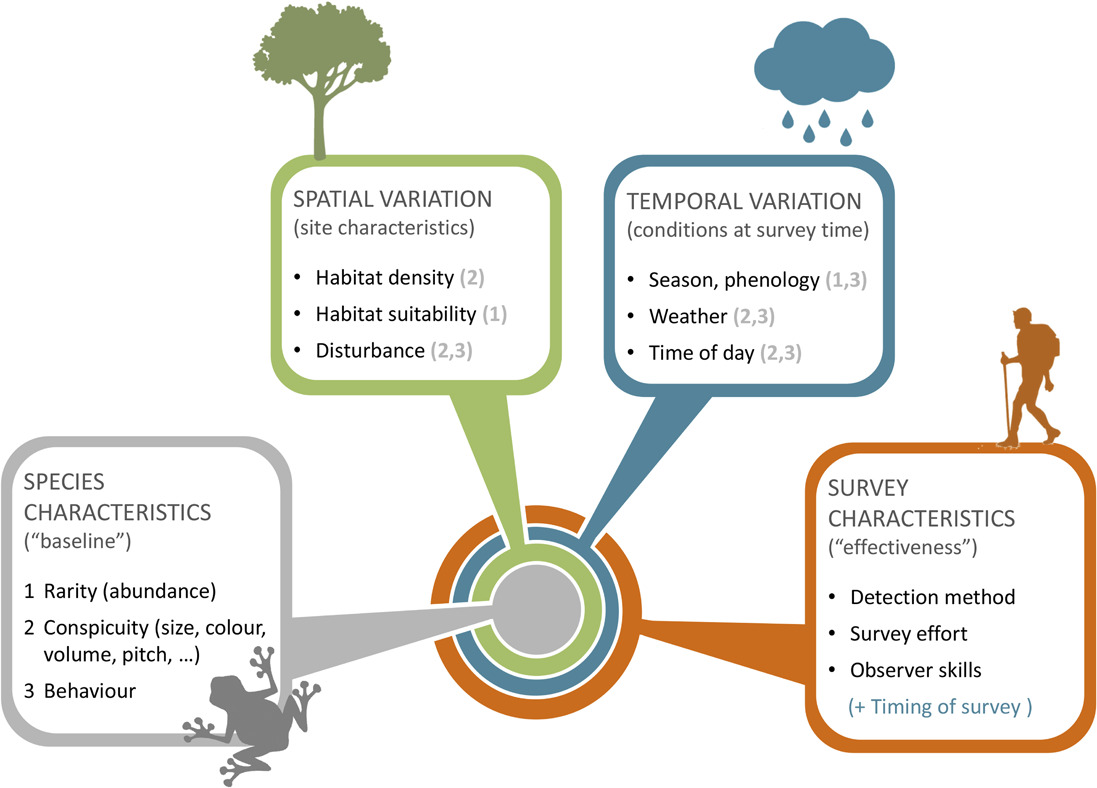
Figure 1
Factors determining species detectability. Whether a species tends to be more or less difficult to detect depends on a series of factors, described here with a nested structure. 1) At the core lie intrinsic characteristics of the species, including whether it is rare or abundant, its physical appearance (or vocal characteristics) and its behaviour. 2) These are modulated by site characteristics, potentially inducing spatial variation in species detectability. For instance, a given species may be more difficult to detect if the vegetation is denser at a site, if local abundance is lower due to the specific habitat type or if individuals are wary because the site experiences greater levels of disturbance than normal. Ambient noise (e.g. a road) can also make difficult aural detection of species at some sites. 3) Species detectability at a given site may also depend on factors that vary temporally. For instance, the species may display seasonal changes in behaviour or even abundance. Behaviour also normally changes with the time of day and weather conditions, and so do visibility (or audibility) conditions. 4) Finally, the detectability of a given species, at a given site and point in time, depends on the detection method used, the skills of the surveyor and the amount of survey effort (e.g. duration of a survey visit). In the diagram, the numbers in brackets indicate how factors that vary in space and time can modulate aspects defining a species ‘baseline’ detectability. This diagram highlights key factors affecting detectability and their interactions but it is not necessarily an exhaustive account. Differences in survey characteristics in space or time will induce spatial or temporal variation in detectability.
Figure and description from Guillera-Arroita (2016) Modelling of species distributions, range dynamics and communities under imperfect detection: advances, challenges and opportunities. Ecography 40(2):281-295.
